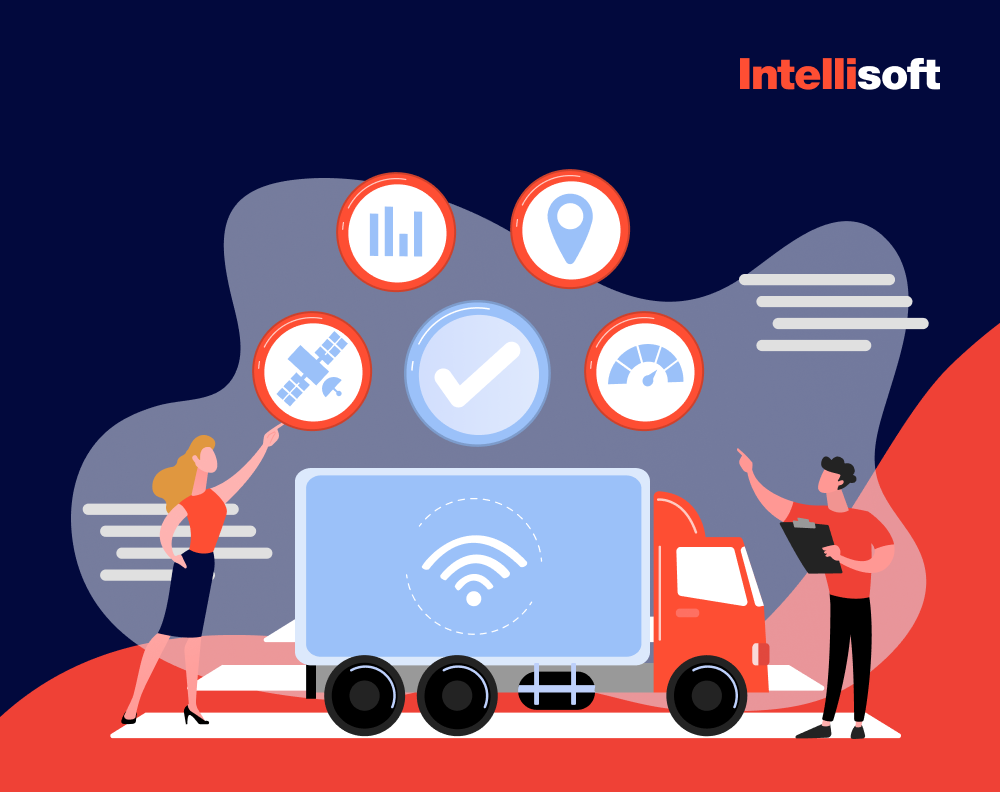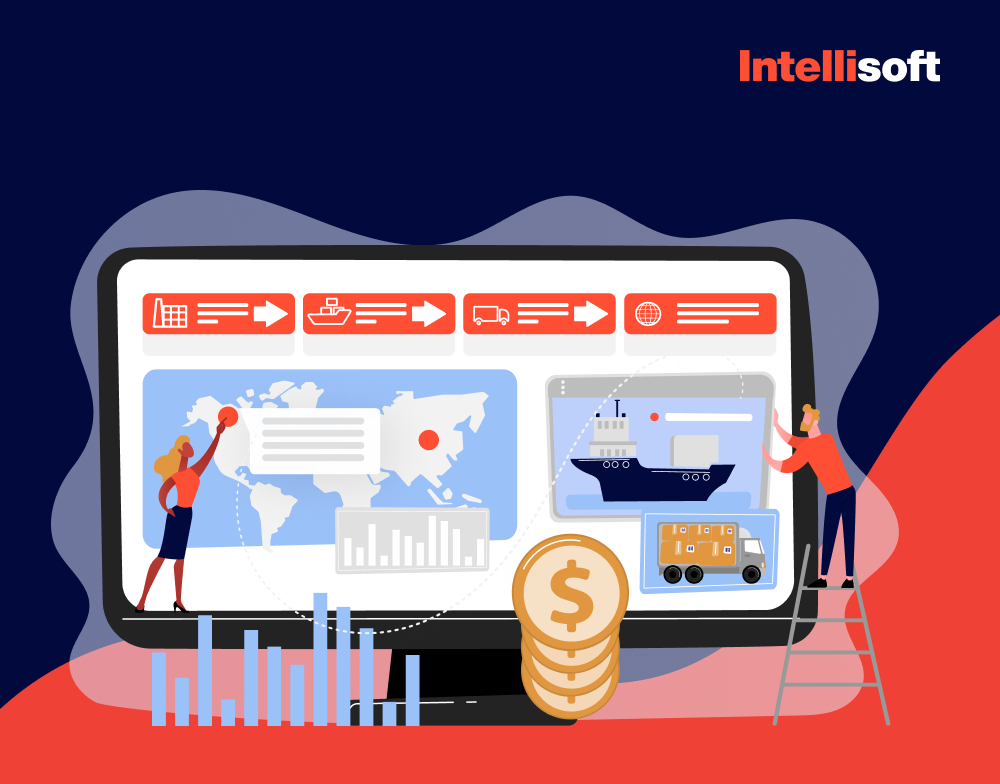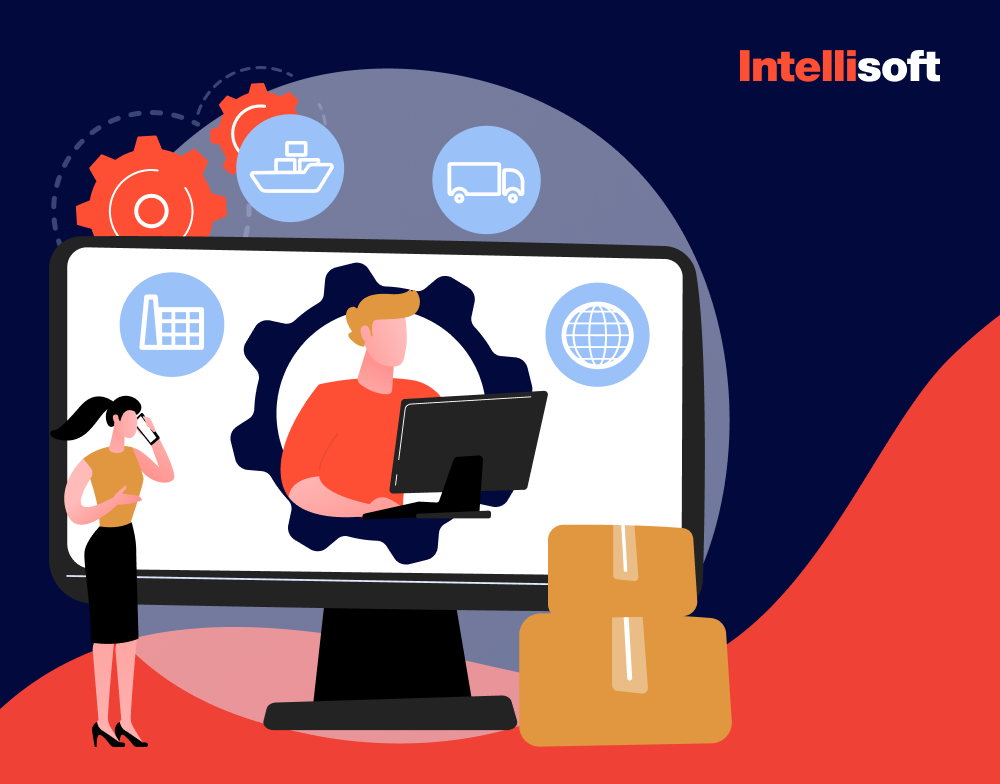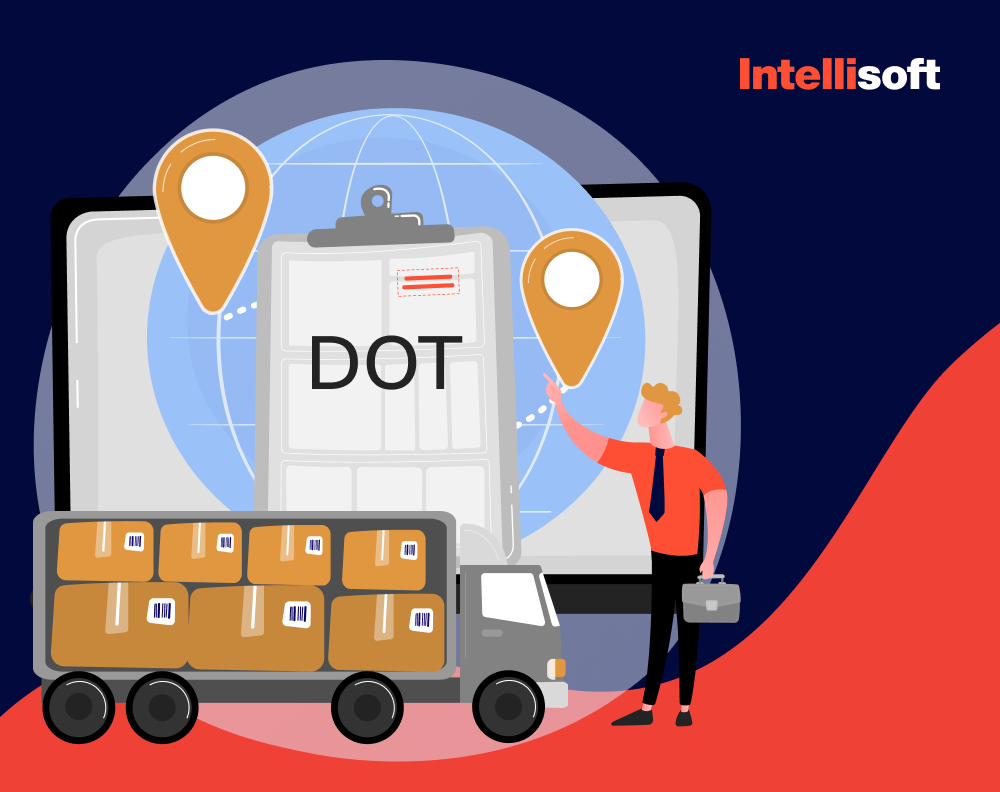The effective transportation of goods is essential nowadays to have streamlined delivery and effective product allocation. Businesses require an advanced route optimization app to maneuver through their daily challenges. In the same way, Dominic Toretto and his crew navigate the complex web of city streets and international locations using a combination of skill, strategy, and technology.
This article delves into the fundamental concepts of route planning and optimization, their significance, and the latest technologies revolutionizing their capabilities. Also, we will share IntelliSoft’s expertise in creating solutions for logistics and transportation.
Table of Contents
What is Route Optimization?
Route planning and optimization are crucial tasks that involve the complex process of finding the most optimal path to reach a destination. It is a multi-dimensional approach that considers several factors, including distance, time, and cost, while also considering various real-world constraints such as traffic conditions, vehicle limitations, and resource availability. The main goals can be summarized as follows:
- Minimizing Travel Time. The primary objective of road planning is to reduce the time required to reach a destination. This approach leads to accelerated deliveries and enhanced customer satisfaction for businesses. For individuals, it cuts time spent on the road.
- Reducing Fuel Consumption. Delivery companies can reduce fuel consumption by optimizing routes, lowering operational expenses, and reducing environmental impact.
- Enhancing Safety. Optimal ways consider road conditions and traffic, promoting safe travel and reducing accidents.
- Maximizing Resource Utilization. Businesses can optimize resource allocation by effectively managing delivery trucks and drivers.
- Mitigating Emissions. Optimizing paths can play a significant role in reducing greenhouse gas emissions, thus supporting environmental sustainability initiatives.

How does route optimization work?
As a fleet management business, your deliveries are crucial for your success. Therefore, no room for human error should impact your fleet’s operations, especially for larger fleets. Technical assistance is essential for managing such complex operations.
Optimizing paths requires complex calculations that are beyond the capabilities of an average person to perform manually. Although it may seem like an excellent way to save money on software, manual inputs can result in incorrect calculations and consume a lot of time, which can affect the accuracy, efficiency, scalability, and flexibility of your operations. Integrating comprehensive software that automates the process can help you effectively manage the required deliveries within the designated time frame and achieve success in your business.
A route optimization app uses advanced algorithms to calculate the quickest ways between stops. It also helps track traffic congestion and road accidents that could increase a driver’s time spent on the road. The software generally follows the Travelling Salesman Problem (TSP) formula, which provides the shortest possible path to visit each city once and return to the city of origin.
Using TSP, the app for planning route with multiple stops can maximize time efficiency among drivers, helping to meet delivery deadlines, improve customer satisfaction, and enhance driver well-being by spending less time on the road.
There are three primary route strategies for optimization:
- Static routing. Paths are planned on a monthly or quarterly basis for specific geographic areas.
- Dynamic routing. Routes are scheduled daily to fulfill both current and predicted orders.
- Real-time dynamic routing. Routes are planned daily to manage advance orders and meet customer delivery times.
Choosing the right path strategy depends on your specific business requirements and demands. If you receive a high volume of new deliveries on a regular basis, then dynamic or real-time dynamic routing might be the best option for you. On the other hand, if you receive fewer but regular orders, such as monthly orders from the same customer, then static routing might be more suitable.
Why is Route Optimization Software Important?
Transportation route optimization software can greatly reduce mileage by up to 20% and increase order capacity by 100% without expanding your fleet. One company that has implemented this technology to significant effect is UPS, a leading and trusted shipping company. Using big data analytics, UPS discovered that turning left led to more traffic congestion, delays, and increased fuel consumption. As a result, the company redesigned its paths to minimize left turns, with trucks now turning right or going straight in 90% of cases.
These results affected significant savings for UPS, including 10 million gallons of fuel and the ability to deliver an additional 350,000 parcels each year. Additionally, the company has reduced emissions equivalent to those produced by over 20,000 cars.
Route Optimization Software Market Analysis
The estimated size of the Route Optimization Software Market is $3.52 billion in the current year, and it is expected to reach $5.46 billion by the end of the forecast period. A Compound Annual Growth Rate (CAGR) of 9.16% is expected during the forecast period.
The best app for delivery route planning helps plan, schedule, and calculate the most efficient vehicle course, saving time and money. It is useful when multiple stops, client meetings, and product deliveries occur. The software utilizes historical data and scenario testing to determine the best path, avoiding traffic congestion.
There is an increase in logistics-specific solutions in many regions. The logistics industry utilizes cloud platforms and fleet management tools to optimize their ways based on cost-effectiveness. Software providers offer solutions to reduce costs and support monthly, quarterly, and yearly payments. These factors have contributed to the increasing popularity of route optimization software.
Logistical solutions are the primary drivers of this sector, and the introduction of new vital competitors is another critical driver. The major players are developing a new app for planning route with multiple stops that use Blockchain, data analytics, and other technologies. These advancements provide fleet providers with optimized courses.
For example, Onfleet offers a comprehensive delivery optimization program that includes solutions for businesses of all sizes operating in the final mile. The platform provides users with optimization options, dispatch paths, and delivery notifications to send to clients online. Onfleet also offers driver-focused apps for planning multiple routes with navigation and other capabilities required for successful, on-time deliveries.
How is route planning different from route optimization?
Route planning and optimization are often used interchangeably, but they are two different terms:
- Route planning involves using a pre-existing list of orders to find the shortest and most cost-effective delivery paths. This process does not consider dynamic factors that could affect the route.
- On the other hand, route optimization goes beyond the planning process by allowing fleet managers to set multiple parameters to plan the most efficient delivery paths. These factors may encompass vehicle capacity, type of vehicle, hours spent driving, work schedules, road limitations, current traffic and weather situations, driver efficiency, among other considerations.
4 Challenges That A Route Optimization App Can Help You Solve
Are you currently grappling with transportation issues hampering your productivity? If so, let’s discuss some common problems you might be experiencing.
Increasing customer demands
As technology evolves rapidly and online shopping becomes easier, both B2C and B2B customers now expect more than ever before:
- Delivery windows are now tighter
- Covariance is reported immediately
Transportation is full of variables, making it challenging for your office. However, with the proper software, you can:
- Reduce planning time
- Improve the precision of estimated arrival times
- Enhance customer communication
Integrating the best app for planning a route with multiple stops with your vehicle tracking system can provide transportation planners with real-time visibility of their fleet’s progress against the plan. Variances from the planned course or schedule can be easily identified, allowing you to proactively alert your customers through your transportation planning or customer service teams.
Diversification of home delivery options
If your business requires delivering products to customers’ homes, you may be aware of some common difficulties, such as:
- Expanding eCommerce orders
- More increased need for faster order processing and delivery
- Different ways to deliver products to customers at their homes
Home delivery has become more complex due to higher customer expectations, with customers expecting faster and more affordable shipments, as well as a choice between different delivery options like:
- Home delivery
- Delivery to their place of work
- Delivery to a secure locker
To provide a seamless delivery experience, it’s crucial to allow customers to opt for click and collect option from a designated location. However, with many factors involved in the delivery process, you need a comprehensive order fulfillment system that can give you a clear view of where every item is at any given time.
This is where delivery route planner app comes in handy. It helps you streamline the delivery process by optimizing the path and tracking the order fulfillment, ensuring that the customers receive their orders on time, every time.
Continued driver shortage
One of the reasons why there is still a shortage of drivers in the trucking industry is the e-Logging mandate. This mandate has caused many truckers to consider leaving the industry. Federal regulations enforce rules for the number of hours truckers can drive, which limits the amount of money they can earn.
Although a route planning app for iPad cannot change the perception of trucking as a career, it can help enhance drivers’ experience and maximize their productivity.
How can it do that?
With the best app for route planning, you can consider driver preferences for meal breaks, overnight stops, or finishing hours during the path planning process. Optimizing the number of completed drops for each driver can ensure maximum profitability and driver satisfaction.
Increased requirement for real-time reporting
The demand for real-time reporting has been increasing in the supply chain industry. The reason is simple; it helps improve operations’ efficiency and service levels. Smart devices are being used to monitor the progress of goods and deliveries more thoroughly. It means that it can be done easily by tracking the movement of a truck in the Southwest or a pallet across an ocean.
With real-time reporting, deliveries can move goods sooner after they arrive at a distribution center, and customers can get more accurate information about expected delivery times. This approach ultimately leads to improved operational efficiency and increased profitability.
The best app for delivery route planning enables you to:
- Receive instant notifications if your trucks deviate from their assigned paths.
- Get updated delivery time estimates to notify customers of potential delays.
- Consider current road conditions and communicate with your drivers to understand any obstacles they encounter during delivery.
- Generate reports on important performance indicators such as total deliveries and timely completion.

Benefits of Vehicle Route Optimization Applications
Transportation companies face numerous challenges in their daily operations, and one of the most significant issues they encounter is optimizing their road scheduling. This is where route scheduling solutions come into play, providing various benefits that can help transportation companies operate more efficiently. What is the best app for route planning? Let’s find out the key benefits!
Automated planning
European cargo trucks traveled empty for 21.2% of their distance in 2021, which equates to 21 billion miles or 34 billion kilometers. This is an inefficient use of vehicles, resulting in higher fuel expenses for carriers. Efficient distribution of deliveries with custom vehicle routing software can minimize deadhead mileage.
Painless rerouting
A transportation route optimization app utilizes real-time traffic information to recalculate paths dynamically. This feature enables drivers to adapt their journey quickly based on road circumstances and new delivery requirements, such as a change in delivery time or address. The software accounts for various factors such as accidents, road closures, weather, and other unforeseen events.
Improved fleet management
Thanks to GPS tracking, the best app for planning a route with multiple stops provides real-time visibility of vehicle locations, which helps to monitor and manage fleets effectively. Additionally, the software assists in allocating drivers to specific ways, considering elements like driver availability, driving category, and workload distribution.
Effective problem solving
Developing an app for route planning can help manage constraints such as delivery time windows, vehicle capacities, customer preferences, and special instructions. Managers can use this software to set up rules and exceptions, enabling the system to send alerts and notifications about missed deliveries, failed pickups, delays, or route deviations. With this approach, managers can take prompt action and intervene immediately in case of any issues.
Automated reports
The automated delivery route planner app can create detailed reports and offer insights on important performance metrics such as delivery time, distance covered, fuel usage, and driver efficiency. It helps managers save time and resources and enables them to make informed decisions in real time.
If you find these benefits of implementing the best app for route planning interesting, let’s find out how to add specific functionality into your logistics workflow. You have 3 options; use a ready-made solution, integrate the required functionality using API, or develop a custom option.
5 Best Route Optimizations Apps For Drivers
Let’s explore what ready-make software for route optimization exists on the market and discover its pricing.
We have evaluated 5 different apps for planning multiple routes based on their ease of use, quality of paths, and ability to handle various paths. Below is the list of route optimization apps that will help your logistics business reduce expenses and improve the efficiency of your drivers.
Routific

Routific is a user-friendly and powerful software for planning multiple stops and multiple routes. It primarily caters to the needs of small and medium-sized local delivery businesses. Sales teams and service organizations such as landscapers or maintenance providers utilize their multi-stop route planning features.
Routific’s dispatcher-friendly features include:
- Drag-and-drop options to rearrange stops and edit paths
- One-click dispatch to drivers
- Automated customer notifications
- A timeline view to track progress throughout the day
Routific optimizes paths to achieve both efficiency (it means shortest distance) and driver acceptability. Driver retention is a significant concern for many businesses, so we ensure that working conditions and road quality are top-notch. With this route planning app for deliveries, it’s easy to schedule flexible driver breaks, reassign stops between drivers, and send updated road details in case of any changes. This service also has excellent customer support, provided by a 100% in-house team of actual humans.
Its pricing plans start at $49 per vehicle per month. If you opt for GPS tracking and proof of delivery features, the cost is $59 per vehicle per month. Besides, automated customer notifications via email or SMS are available for $19 per vehicle per month. The best route planning app for Android also offers per-stop pricing options.
Circuit for Teams
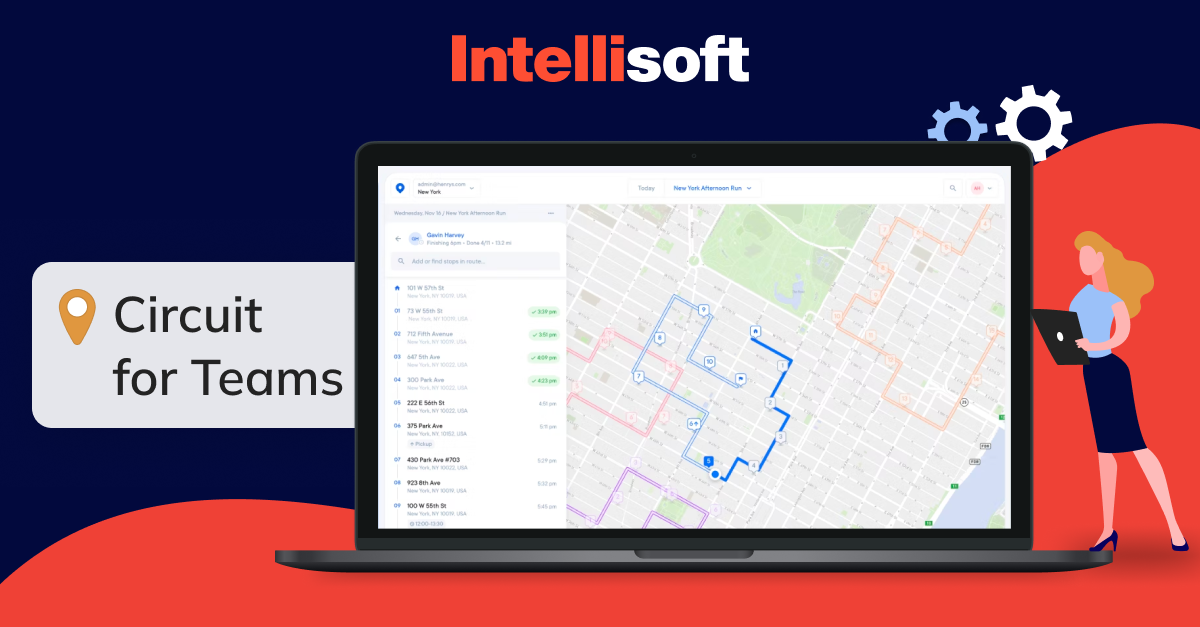
Circuit is a well-reviewed standalone delivery route planner app for single drivers, available on both iOS and Android app stores. Recently, they have expanded their services to Circuit for Teams, which allows multi-stop route planning and dispatch for multiple vehicles.
Their browser-based route planning app for iPhone is incredibly user-friendly, making it an excellent option for small businesses where one person has to manage multiple roles, including:
- Route planning
- Dispatch
- Delivery management
However, there are a lot of messy, tangled routes, which is a downside. Additionally, it is impossible to edit paths or view overall distance and time metrics, making it less appealing for route managers who need to keep track of multiple paths and vehicles simultaneously. The best route planning app for Android has received a rating of 4.8 based on over 90 reviews.
As for the route quality, you have to manually add the numbers for each course because Circuit doesn’t show how long its routes are each day.
Circuit’s Basic plan starts at $100/month for three drivers and goes up to $200/month for five drivers. These plans come with customer notifications and proof of delivery options. The Pro plan costs $500/month and includes driver analytics for up to 10 drivers.
Onfleet

Onfleet is a route planning app for iPad that offers a complete set of features for last-mile delivery. It is an excellent option for on-demand courier businesses due to its automatic driver assignment feature. Dispatchers and drivers love the live chat option available inside the driver app.
Although Onfleet is a comprehensive tool, it has some downsides. For instance, route optimization was initially available as a paid add-on in 2016, but it is now standard on all price tiers. However, the interface doesn’t show actual paths, just a collection of pins, and there is no color coding, which means that users can’t differentiate one route from another. Moreover, the lack of metrics makes it impossible to tell how good Onfleet’s routes are. The lack of a timeline view makes it difficult for dispatchers to monitor progress in real time.
This route planning app for iPhone is more suitable for mid-market to enterprise-level companies as it has a fuller feature set than Routific or Circuit, including barcode scanning. However, the steep learning curve and its high cost may not be ideal for smaller companies.
It’s important to note that Onfleet doesn’t provide data on route length or indicate actual courses, making it challenging to determine route quality. Nonetheless, with a user rating 4.7 (based on 80+ reviews), Onfleet is a popular choice for businesses looking for delivery management software.
Regarding pricing, Onfleet starts at $500/month for up to 2,000 delivery or pickup tasks. For $1,150/month, you get 2,500 tasks, API access, and barcode scanning.
OptimoRoute

OptimoRoute is an efficient routing application that offers much flexibility and control to set up your routes exactly as you want. However, learning and understanding the best app for bike route planning may take some time.
You can create individual driver profiles with their shift schedules, including breaks, overtime, start/end locations, skills (if you work in the field service industry), vehicle types, service areas, and cost and speed settings. Furthermore, you can set up multiple capacity constraints (for example, weight & volume). However, this route planning app for deliveries does not include barcode scanning or order-taking functionality, similar to Routific.
Pricing for OptimoRoute starts at $35 per vehicle per month if you sign up for an entire year, with a limit of 700 orders. Alternatively, you can opt for $44 monthly for up to 1,000 orders, real-time tracking, and proof of delivery. Custom pricing is also available for more complex requirements.
Route4Me

Route4Me is an app for route planning and optimization that has been around for a while. It offers a wide range of add-on features that can be customized to meet your needs. For instance, you can integrate support for curbside pickups, avoid left or right turns, or allocate stops to specific time windows.
However, there are some peculiarities about Route4Me that users found confusing. For example, the tool automatically optimizes its routes to use the smallest number of vehicles possible, and this cannot be changed. It can be problematic if you have your fleet and drivers, as Route4Me may leave one driver idle while another works overtime.
Besides, Route4Me’s estimated arrival time (ETA) is often unrealistic. For instance, it estimated that a path section would take only 10 minutes, while Routific and Google Maps estimated it would take 18-19 minutes. This underestimation of journey times can lead to late deliveries and poor customer experience.
Route4Me’s routes are slightly shorter than Routific’s, but they often have overlapping spaghetti routes. The best app for bike route planning has been rated 4.5 stars by over 380 users.
Pricing starts at $319 per month for route optimization. Additional features such as customer notifications and delivery time windows are available as add-ons, which increase the cost. For example, adding time windows costs an extra $79 per month. The tool does not include proof of delivery features.
Integrating Ready-to-use APIs
Access to detailed information regarding traffic conditions, maps, and points of interest is crucial to creating a reliable route management feature. Fortunately, several prominent mapping tools industry providers offer APIs containing all the necessary data. By seamlessly integrating these APIs into your current delivery management software, you can streamline your operations and improve the efficiency of your routes. Let’s take a closer look at some top-rated tools that offer APIs for route optimization.
Google Maps Platform
Google Maps Platform is a cloud-based service that has become well-known for its ability to facilitate logistics automation in the best app for RV route planning and is used by leading logistics companies such as FedEx. Google Maps Platform consists of three products, and one of them is called Routes. It comprises several APIs that help users build and optimize routes based on traffic information.
- The Directions API is used for building the optimal route between different locations, considering various modes of transportation and factors such as traffic, the number of turns, and restrictions set by the user (such as avoiding tolls, highways, and ferries). It is the prevalent feature to integrate into the route optimization app.
- The Roads API identifies the most likely road a vehicle travels on by tracking multiple GPS coordinates. It then returns the closest road segment for each point and provides information about speed limits on each road segment.
- The Distance Matrix API returns the travel distance (in either imperial or metric units) and travel time as the Directions API calculates.
Google Maps Platform operates on a pay-as-you-go pricing model, with the price for each API depending on the number of monthly queries. For example, the price for the Distance API is calculated based on the number and type of requests made. There are two types of requests: basic, for routes with ten or fewer waypoints, and advanced, for routes with more than ten waypoints, where the algorithm considers traffic information.
For up to 100,000 basic requests per month, the price is $2 for every 1000 requests. For 100,001 to 300,000 advanced requests, the price is $1.60 per 1000 requests, and for 300,001 to 500,000 requests, the price is $1.25 per thousand. If users need to get larger volumes, they should negotiate the price with Google Cloud sales representatives.
H3 Mapbox
Mapbox is a popular alternative to Google Maps that offers various APIs for different needs and presents a set of solutions for logistics companies. It offers a Directions API that enables users to:
- Calculate optimal routes for driving, cycling, or walking while considering traffic and incident information (optional and only for certain regions).
Provide turn-by-turn navigation. - Create routes with up to 25 waypoints without traffic consideration or up to three waypoints based on traffic data.
- Exclude tolls, motorways, or ferries when building a route.
- Choose desired arrival and departure times (currently in public beta).
- Use the Isochrone API to identify reachable areas within a specified time from a chosen location.
Mapbox follows a pay-as-you-go pricing model but offers a free tier. Users can make up to 100,000 requests per month for free. After that, the price is $2 per 1000 requests, provided they don’t exceed 500,000 requests.
HERE API
The Routing API offered by HERE is an ideal solution for building a web or mobile route planning app for deliveries with complex architecture. It enables you to optimize routes and calculate them for multiple waypoints, edit existing routes, update past routes, and calculate a matrix of routes, taking into account various starting points and destinations.
The Routing API has several helpful features, such as automatic real-time traffic tracking, incidents, public transit timetables, and historical data. It also allows you to specify parameters like speed, ascent, descent, and auxiliary to calculate fuel or energy consumption for your vehicles on a given route. Additionally, it accurately matches GPS traces to the HERE road network to determine the most probable route your moving assets have taken.
HERE Fleet Telematics, a service designed specifically for logistics companies, is also worth mentioning. This service offers geofencing, route building, matching capabilities, toll calculation, height and slope values information, curvature, speed limits, and traffic lights. The Tour Planning REST API, part of the Fleet Telematics solution, helps managers optimize multi-vehicle routes, considering constraints such as capacity, time windows, maximum travel time, and driver breaks.
HERE offers different plans, including the Freemium, Add-on, and Pro.
- The Freemium plan allows up to 5,000 monthly active users with a limit of 250,000 overall transactions. If you exceed these limits, you will need to pay $1 for every additional 1000 transactions. Furthermore, this plan includes 5 GB of database storage and allows you to transfer up to 2.5 GB of data.
- The Add-on plan extends the limits of the Freemium plan
- The Pro plan offers HERE Data Layers for two city map tiles with data refresh, customer support via HERE’s support portal, and an AI-powered Live Sense SDK.

Building A Route Planning Algorithm From Scratch
If you need a route planning app, you can build it from scratch. This approach demands considerable development effort but comes with the added benefit of exceptional customization capabilities. You can set custom rules and preferences to build routes that fully cater to your needs.
Machine learning for delivery route planning
Route optimization is vital for businesses that rely on transportation. One way to create and optimize routes is through machine learning (ML). There are various ways to use ML and ready-made solutions for planning paths. In this context, we will explore a relatively new ML algorithm known as ant colony optimization.
The core concept of ant colony optimization is modeled after how ants naturally find the shortest path from their nest to a food source, utilizing a machine learning algorithm to replicate this process. Here’s the breakdown:
The algorithm initially identifies every possible path to the target destination. It then retraces its steps to the start to explore additional paths.
Once it has mapped out all conceivable paths, the algorithm evaluates their effectiveness by measuring how frequently they can be traversed within a specific timeframe (for instance, within 15 minutes).
Ultimately, the algorithm singles out the most efficient path.
Should there be new variations of the discovered road or completely new paths, the algorithm adapts by reassessing to determine the most optimal way to deliver goods. This machine-learning approach is instrumental in streamlining route planning and enhancing the efficiency of delivery schedules for couriers.
Using the best route optimization app is the best way for any business to deliver on time efficiently. Transportation management systems help managers and logistics companies plan routes, adjust delivery points, track drivers in real time, and edit routes manually. The results of implementing such software are increased operational efficiency, decreased fleet idle time, and improved overall delivery performance.
Steps to Take Before Developing and Integrating a Vehicle Route Optimization Solution
To develop an efficient and effective app for route planning, you must undertake several crucial preliminary steps before diving into the development process. These steps are essential to ensure the final product meets your desired objectives.
Defining operational requirements
Your business should thoroughly assess its existing logistics and delivery procedures, pinpointing any obstacles and inefficiencies hindering its operations. Once identified, they should evaluate how implementing the best navigation app for route planning tailored to their unique needs and challenges can help eliminate these obstacles and improve overall performance. This approach could include setting specific targets and objectives, such as reducing delivery time, streamlining resource allocation, and minimizing fuel costs.
Assessing system compatibility
When considering the best app for route planning implementation, it is crucial to assess whether it needs to be compatible with other systems the business utilizes, such as administration, order, or warehouse management solutions. To ensure a smooth integration with the existing infrastructure, your business must identify the data exchange requirements and establish how the route-building solution will seamlessly interface with the other systems. It will ensure that the optimization software operates efficiently and effectively while maximizing the benefits to the business.
Researching available solutions
To find the best app for RV route planning for your business needs, thoroughly exploring the various solutions available on the market is crucial. This approach involves carefully reviewing their features, scalability, reputation, and customer reviews. To ensure that the software meets your requirements, you should request demos or trial versions from the vendors. This approach will enable you to assess the software’s performance, user interface, and analytics and make an informed decision that aligns with your business goals.
Evaluating the software’s flexibility
When it comes to building optimal transportation methods, routing algorithms can be beneficial. These algorithms consider multiple criteria, such as distance, traffic patterns, and delivery schedules, to create the most efficient route possible. However, there are some human factors that automation may not consider. For example, a driver might be absent, there could be an accident on the road, or a client might not respond to pick-up notices.
In such cases, it’s crucial to have the best route optimization app to accommodate planned route changes. This approach might involve manually building new paths, reorganizing the delivery schedule, or making other adjustments to ensure deliveries are still made on time and efficiently. A flexible and adaptable routing system can help ensure that transportation operations run smoothly despite unexpected challenges.
Anticipating future growth
You’re definitely looking to expand, so you should consider whether the route optimization solution they are adopting can scale up accordingly. They must assess whether the software will be able to accommodate potential changes in fleet size, order volume, or geographic expansion.
If a business has unique requirements or specific integration needs, it may need to invest in custom route planning software development instead of adopting off-the-shelf software. This approach would require considering factors such as development cost, timeframe, and finding an experienced logistics software development company.

Integrating Route Optimization With IntelliSoft
Integrating route optimization functionalities into logistics and transportation software solutions is a vital improvement in the dynamic business landscape. IntelliSoft, a company with a reputation for developing advanced software applications, is a prime candidate for this integration. Known for their proficiency in solving complex challenges through innovative technology, IntelliSoft’s expertise in artificial intelligence, machine learning, and data analytics uniquely positions them to revolutionize route optimization. Our outsourcing development team can integrate existing route optimization apps, put ready-to-use APIs into your current delivery management software, or even develop a route planning algorithm from scratch.
For our client, Ingram Barge, we merged all these technologies into one solution that effectively helps freight brokers plan routes, caravan order & composition, and loads. They can track all stages of the process, from loading barges at docks to attaching them to towboats, sailing to the freight’s final destination at the port, and then storing the barges at docks until clients need to ship their next freight.
If you want the best route optimization app for your delivery activities, contact us now!


